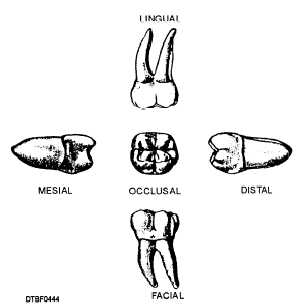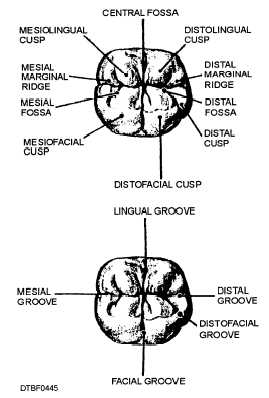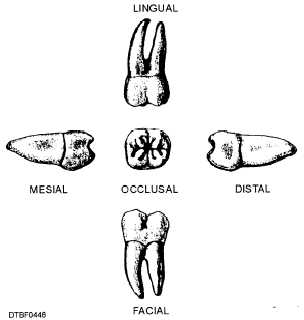Occlusal Surface Numerous fissures and grooves cover the occlusal surface. There is no distinct oblique ridge.
Root Surface - The root may have from one to as many as eight divisions. These divisions are usually fused and very often curved distally.
MANDIBULAR FIRST MOLAR
The mandibular first molar (tooth #19 or #30), illustrated in figures 4-44 and 4-45, is the sixth tooth from the midline.
It is the first permanent tooth to erupt.
Facial Surface - The facial surface has two grooves: the facial groove, which is an extension of the facial groove from the occlusal surface and the distofacial groove, an extension of the distofacial groove from the occlusal surface.
Occlusal Surfaces - The occlusal surface has five cusps (fig. 4-45). The fifth cusp is called the distal cusp.
Roots - The tooth has two roots, a mesial and a distal.
MANDIBULAR SECOND MOLAR
The mandibular second molar (tooth #18 or #31), illustrated in figure 4-46, is the seventh tooth from the midline.

Figure 4-44.—Surfaces of mandibular first molar.

Figure 4-45.—Features of an occlusal surface of mandibular first molar.

Figure 4-46.—Surfaces of mandibular second molar.
Facial Surface - The facial surface has only one groove, the facial groove, which arises on the occlusal surface, extends over the facial margin onto the facial surface.
Occlusal Surfaces - The greatest difference between the occlusal surfaces of the mandibular first 4-22

